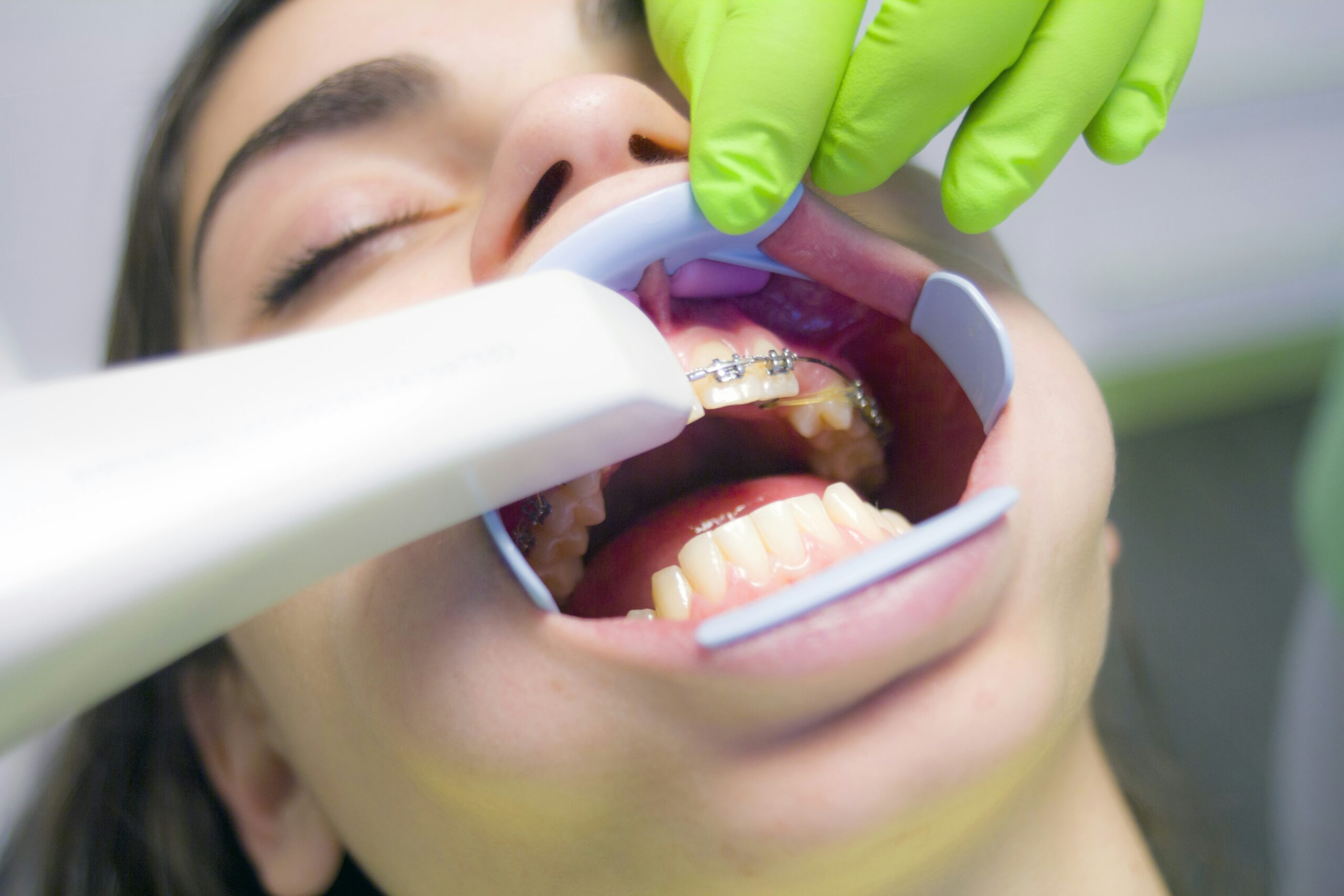When it comes to oral health, understanding the roles of different dental professionals is crucial.
Dentist vs orthodontist: you’ve likely heard these terms before. But do you know the difference?
Both dentists and orthodontists work to improve oral health. However, their areas of expertise differ significantly.
A dentist takes care of your overall oral health. Regular check-ups with a dentist are essential for preventive care.
On the other hand, an orthodontist is a specialist. They correct bites, occlusion, and alignment of teeth.
But when do you need to see an orthodontist instead of your regular dentist?
This question is common, especially when considering braces or other teeth straightening options.
You might also wonder about the effectiveness of clear aligners, or if you’re too old for braces.
How long does it take to get straight teeth? Are braces worth the investment?
These are all valid questions.
In this comprehensive guide, we aim to answer these and more. We’ll delve into the differences between a dentist and an orthodontist, helping you make informed decisions about your oral health care.
What Is a Dentist? Training, Treatments and Oral Health Care
A dentist is a medical professional who specialises in oral health.
They are the primary care providers for patients of all ages.
Dentists diagnose and treat issues related to the teeth, gums, and other parts of the mouth.
They also provide advice and instruction on oral hygiene. This includes brushing, flossing, diet, and other aspects of dental care.
Dentists perform a wide range of procedures. Here are some common ones:
- Dental cleanings and exams
- Filling cavities
- Tooth extractions
- Root canals
- Placing crowns, bridges, and veneers
- Teeth whitening
- Gum disease treatment
- Oral cancer screenings
Dentists play a crucial role in preventive health care. Regular check-ups can help detect dental issues early before they become severe.
In addition to treating oral health issues, dentists also look at the big picture. They assess how oral health is affecting or is affected by overall health.
For example, certain medical conditions like diabetes can affect oral health. Conversely, poor oral health can contribute to health problems elsewhere in the body.
In essence, a dentist’s role is comprehensive, focusing on the prevention, diagnosis, and treatment of a wide range of oral health issues.

What is an Orthodontist?
An orthodontist is a dental specialist who focuses on the alignment of teeth and jaws.
They are experts in correcting malocclusions, which are problems with the positioning of teeth when the jaws are closed.
Orthodontists use a variety of appliances to help move teeth, retrain muscles, and affect the growth of the jaws. These appliances work by placing gentle pressure on the teeth and jaws.
Here are some common treatments orthodontists provide:
- Braces
- Clear aligners (like Invisalign)
- Retainers
- Space maintainers
- Palatal expanders
- Headgear
Orthodontists treat patients of all ages, from children to adults.
They can correct a variety of issues, including overbites, underbites, crossbites, open bites, misplaced midlines, spacing issues, and crowding.
Orthodontic treatment not only improves the look of your smile but also your health. Straight teeth are easier to clean, which can reduce the risk of cavities and gum disease.
Properly aligned teeth and jaws can also improve speech and chewing function.
In summary, orthodontists specialise in the diagnosis, prevention, and correction of dental and facial irregularities to help patients achieve a healthy and beautiful smile.
Educational Path and Training
Both dentists and orthodontists start their journey in a similar way.
Following completion of a Dental Degree, those who wish to become orthodontists must pursue further education.
This involves a competitive orthodontic residency program, which typically lasts two to three years.
During this time, they receive specialised training in orthodontics and dentofacial orthopaedics.
They learn about the growth and guidance of the facial development, the biomechanics of tooth movement, and complex orthodontic case management.
In summary, while both dentists and orthodontists are dental professionals, orthodontists receive additional years of specialised training in their field.
This makes them uniquely qualified to diagnose and treat issues related to the alignment of teeth and jaws.
Common Dental Issues and Treatments
Dentists are often the first line of defence in maintaining oral health.
They deal with a wide range of dental issues that affect the teeth, gums, and mouth.
Common dental problems include tooth decay, gum disease, and tooth loss.
Dentists also treat oral infections, mouth sores, and oral cancer.
They are skilled in performing procedures such as fillings, root canals, and tooth extractions.
Dentists also play a crucial role in preventive care.
Regular dental check-ups allow for early detection of potential issues.
This can prevent minor problems from escalating into major ones.
During a routine visit, a dentist will typically:
- Conduct a thorough oral examination
- Perform professional teeth cleaning
- Take dental X-rays if necessary
- Provide oral hygiene instructions
- Recommend further treatments if needed
In addition to general dentistry, many dentists also offer cosmetic dental services.
These include teeth whitening, veneers, and dental implants.
In essence, dentists are equipped to handle a broad spectrum of dental issues, ensuring overall oral health.
When to See a Dentist
Regular dental visits are essential for maintaining good oral health.
Most dental professionals recommend a check-up every six months.
However, the frequency may vary depending on your specific oral health needs.
For instance, individuals with a high risk of dental disease may need to visit more often.
During these visits, your dentist will:
- Check for cavities and gum disease
- Evaluate your risk of developing other oral health problems
- Check your face, neck, and mouth for abnormalities
- Clean your teeth and provide tips on diet and oral hygiene
It’s also important to see a dentist if you experience any dental issues.
These include toothache, swollen gums, sensitivity to hot or cold, and persistent bad breath.
Other signs that warrant a dental visit include dry mouth, sores or ulcers that don’t heal, and difficulty swallowing or chewing.
Remember, early detection and treatment can save you from potential pain and expense in the future.
In conclusion, regular dental visits and prompt attention to oral health issues can help keep your teeth and gums healthy.
When to Consult an Orthodontist
Orthodontists specialise in correcting misaligned teeth and jaws.
They are the go-to professionals when it comes to orthodontic issues.
If you or your child have any of the following conditions, it may be time to consult an orthodontist:
- Overbite or underbite
- Crowded or spaced teeth
- Misaligned teeth
- Difficulty chewing or biting
- Speech difficulties due to teeth alignment
Orthodontists also play a crucial role in monitoring children’s dental development.
This allows the orthodontist to detect and manage any potential issues early.
For adults, it’s never too late to consult an orthodontist.
Whether it’s for cosmetic reasons or to improve oral function, orthodontic treatment can be beneficial at any age.
In conclusion, if you have concerns about the alignment of your teeth or jaws, an orthodontist is the right professional to consult.
Braces and Teeth Straightening: Who Does What?
When it comes to teeth straightening, both dentists and orthodontists can play a role.
However, orthodontists are the specialists in this field.
Orthodontists have the training and expertise to diagnose, prevent, and treat dental and facial irregularities.
This includes the use of braces, clear aligners, and other orthodontic appliances to straighten teeth and correct bites.
Dentists, on the other hand, can also provide some orthodontic treatments.
This often includes clear aligners for minor teeth straightening.
However, for more complex cases, a referral to an orthodontist is usually recommended.
How Are Braces Put On?
The process of getting braces starts with a thorough examination and diagnosis by an orthodontist.
This includes taking X-rays and making a model of your teeth.
The orthodontist then designs a treatment plan and applies the braces according to this plan.
Clear Aligners and Braces Alternatives
In recent years, clear aligners have become a popular alternative to traditional braces.
These are virtually invisible and can be removed for eating and cleaning.
They are often used for less complex cases and are a popular choice among adults.
In some cases, traditional braces or other orthodontic appliances may be necessary.
It’s important to consult with an orthodontist to determine the best treatment option for your specific needs.
Am I Too Old for Braces? Age and Orthodontic Treatment
One common question many adults have is, “Am I too old for braces?”
The answer is no.
Orthodontic treatment can be successful at any age.
In fact, more and more adults are seeking orthodontic treatment to improve their smile and oral health.
- Adults may choose orthodontic treatment for a variety of reasons, including:
- To improve the appearance of their smile.
- To correct a bad bite or malocclusion.
- To align teeth before getting a bridge, crown, or implant.
- To improve oral hygiene and overall oral health.
However, adult orthodontics may have its challenges.
Adults’ bones are no longer growing, which may affect the outcome of the treatment.
Also, treatment may take longer than it would for children or teenagers.
Despite these challenges, many adults find that the benefits of orthodontic treatment far outweigh the drawbacks.
It’s never too late to improve your smile and oral health.
If you’re considering braces or other orthodontic treatment, consult with your dentist to explore your options.
How Long Does It Take to Get Straight Teeth?
The duration of orthodontic treatment varies greatly from person to person.
It depends on several factors, including the severity of the dental issue, the type of treatment, and the patient’s age.
- On average, traditional braces are typically worn for about 18 to 24 months.
- Mild cases may be resolved in as little as six months.
- More complex cases may require three years or more of treatment.
Clear aligners, like Invisalign, often require less time than traditional braces.
They are typically worn for 12 to 18 months, but some cases may be completed in as little as six months.
Remember, every patient’s orthodontic journey is unique.
Your dentist or orthodontist will provide a personalised treatment plan that outlines the expected duration of your treatment.
Patience is key in orthodontics. The end result – a healthy, beautiful smile – is well worth the wait.
Are Braces Worth It? Cost-Benefit Analysis
The cost of braces or orthodontic treatment can be a significant investment.
However, it’s important to consider the long-term benefits of straight teeth and a proper bite.
- Straight teeth are easier to clean, reducing the risk of cavities and gum disease.
- Properly aligned teeth and jaws can alleviate issues like jaw pain, speech difficulties, and chewing problems.
- A beautiful smile can boost self-esteem and confidence.
While the upfront cost may seem high, the long-term health benefits and improved quality of life make braces a worthwhile investment for many people.
Remember, many dental insurance plans cover a portion of orthodontic treatment, and flexible payment plans are often available.
It’s important to discuss the cost, insurance coverage, and payment options with your orthodontist to make an informed decision.
Ultimately, the decision to get braces is a personal one that should be based on your oral health needs, aesthetic goals, and financial considerations.
Choosing Between a Dentist and Orthodontist for Braces
When it comes to braces, both dentists and orthodontists can provide treatment.
However, orthodontists have additional training and expertise in correcting misaligned teeth and jaws.
Here are a few factors to consider when deciding between a dentist and orthodontist for braces:
- Complexity of your case: If you have severe crowding, an overbite, underbite, or other complex issues, an orthodontist may be the better choice.
- Training and expertise: Orthodontists have 2-3 years of additional training in orthodontics and dentofacial orthopedics.
- Treatment options: Orthodontists often offer a wider range of treatment options, from traditional braces to clear aligners and lingual braces.
Remember, it’s important to choose a provider you feel comfortable with.
Ask questions, discuss your concerns, and make sure you understand the proposed treatment plan before making a decision.
Your oral health is important, and you deserve the best care possible.
Conclusion: Making the Right Choice for Your Oral Health
Understanding the differences between a dentist and an orthodontist can help you make informed decisions about your oral health.
Both professionals play crucial roles in maintaining and improving your dental health, but their areas of expertise differ.
Whether you need a routine check-up, a cavity filled, braces, or more complex orthodontic treatment, knowing who to turn to can ensure you get the best possible care.








